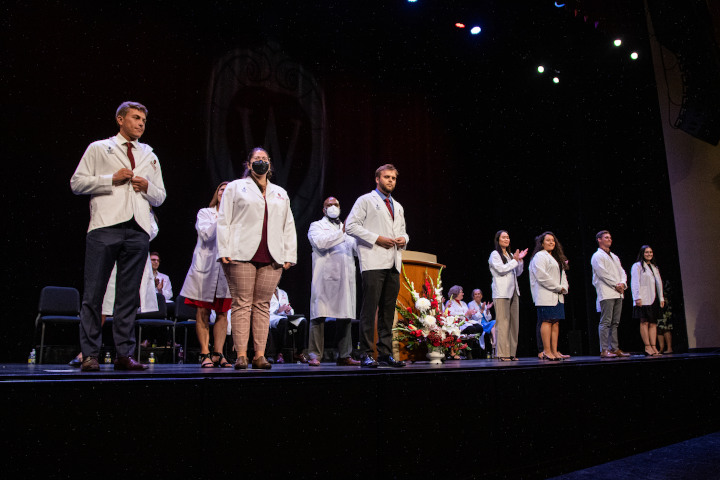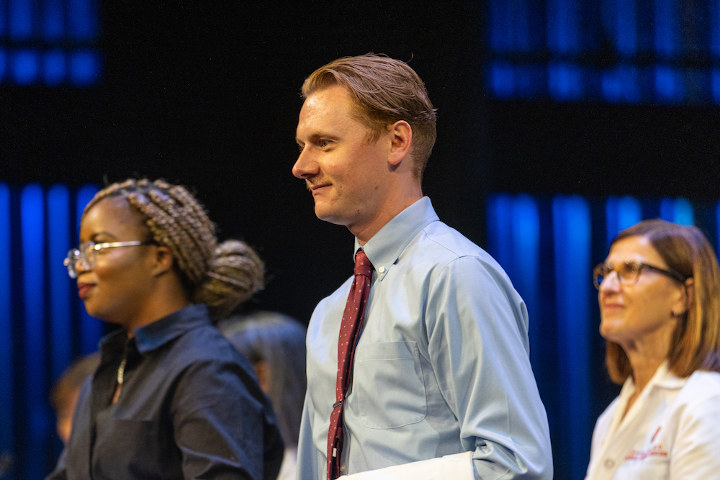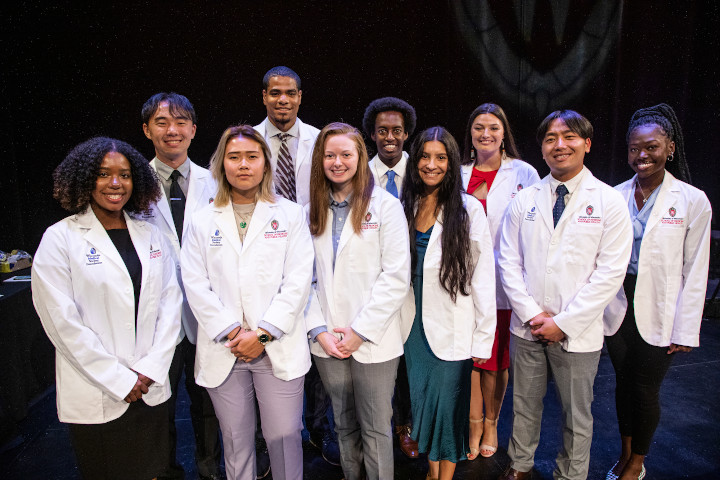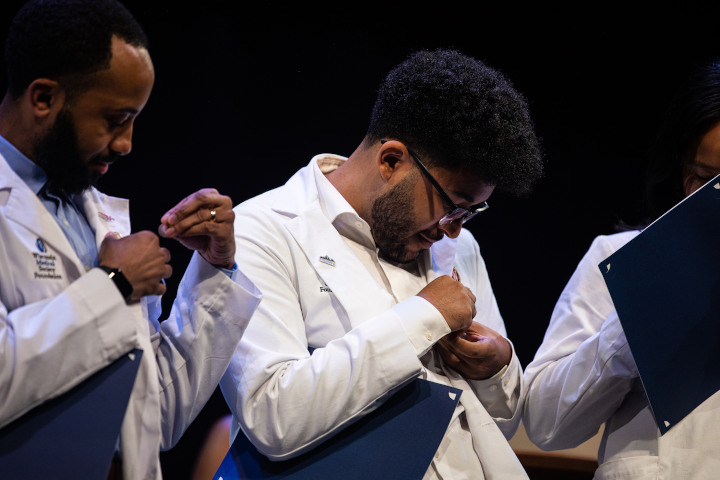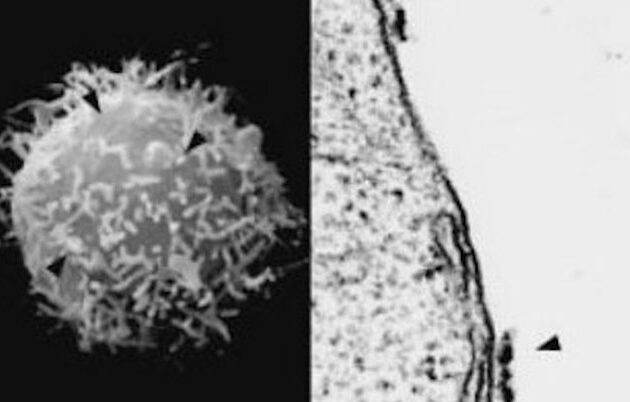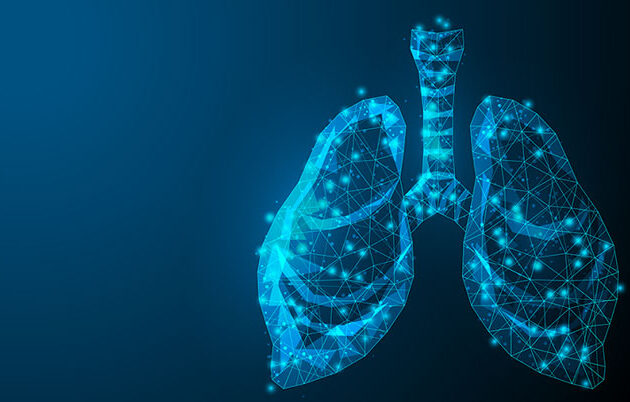This year the school received 5,635 applications for 176 spots. While seventy percent of the student body hails from Wisconsin and nearly sixty percent earned undergraduate degrees in the state, the class has roots in 29 US states, 10 Native Nations, and more than 15 countries. Thirty-five percent of the students in the class are from backgrounds underrepresented in medicine, a new record for the school. Seventeen percent of students were the first in their family to earn an undergraduate degree.
Dean Robert N. Golden, MD, addressed the students during the ceremony, discussing the importance of the intersection between the fields of medicine and public health in light of lessons from the pandemic.
“There are incredibly bright rays of hope breaking through the clouds, illuminating the path forward for pursuing your commitment to making a difference,” he said. “The COVID-19 pandemic has provided brutal confirmation of the immense value of our innovative integration of medicine and public health, a model that is now woven into your curriculum in a way that will prepare you to lead the advancement of health for people and populations.”
Golden also commented on the transition students must undergo as they begin medical school. Hyper-competitive habits that may have been adopted earlier must fall away as students come together to work as a team, learn all they can, and build community to care for patients and each other.
“During the pre-med experience, individual achievement may have seemed more important than collaborative teamwork,” he said. “Please understand that the real ‘competition’ is external, including the evolving pathogenic microbes, the environmental factors, the social determinants of health disparities…and of course the Michigan football team.”
Kathleen Shannon, MD, chair of the Department of Neurology, gave a keynote address to students to provide advice as they begin medical school.
“You’re going to meet some wonderful professional people who are full of passion during your next years here,” she said. “I encourage you to ask them what their own superhero origin story is and how they came to do and love what they do. I hope that you also have a career where you wake up and think that you truly love your job.”
The white coats students receive at the ceremony are gifts sponsored by the Wisconsin Medical Society. Soon the students will also receive their first stethoscopes, which are donated by alumni through the school’s Wisconsin Medical Alumni Association. The presidents of both organizations also briefly addressed the class.
Students bring wide variety of experiences, backgrounds, and perspectives
Members of the incoming class bring with them an array of incredible stories and experiences that shaped their decision to enter medical school and will influence the physician they will become. Some students completed their undergraduate degree recently, while others have been in the workforce for many years. Some are fulfilling a childhood dream of becoming a doctor, while others were inspired more recently to join a profession that provided life-saving care to a loved one.
Shane Hoffman is no stranger to health care, joining the MD program after beginning his career as a nurse. He studied nursing as an undergraduate at UW–Madison, and also served as one of the ultimate ambassadors of the university: Hoffman sported a Bucky Badger costume and played the university’s beloved mascot. In what would prove to be a foreshadowing moment, his first gig as Bucky was at the school’s 2017 Doctor of Medicine Graduate Recognition Ceremony.
